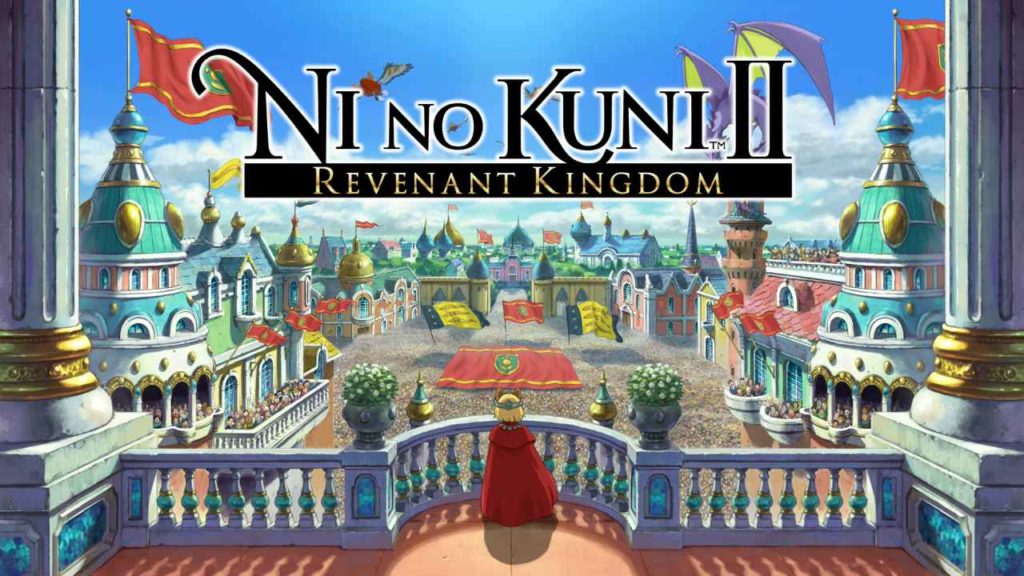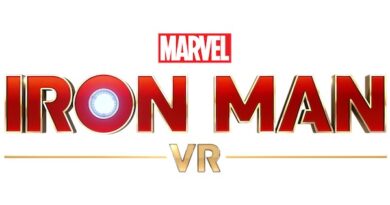Ni No Kuni II: Revenant Kingdom, PS4 Review
This week Koru-Cottage readers, we are lucky enough to have a guest writer, Nick Dorn @ngunsnz, to give us the low down on Ni No Kuni II. Enjoy.
There are a lot of things I came to love in my time with Ni No Kuni II. From the adorable set of colourful characters you meet, the gorgeous cell shaded studio Ghibli inspired art style, the vast landscapes and world building and many more I will touch on. But there was one thing above all that stuck out to me, and that was the amount of charm this game has, charm that has me hooked, and is one of the many reasons that makes Ni No Kuni II such a fantastic JRPG.
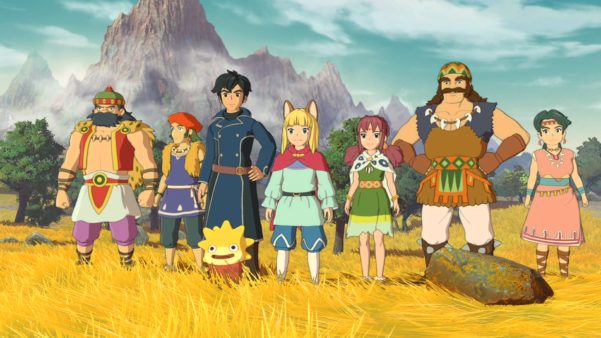
Ni No Kuni II is set in the same universe as the first Ni No Kuni (Wraith of the White Witch) and it’s events take place hundreds of years after the events of the first game, and whilst you will see a few similar faces, this is a brand new adventure with a brand new plot, making Ni No Kuni II: Revenant Kingdom a great starting point for anyone looking to jump into the series. The game will see you steer Evan Pettiwhisker Tildrrum, the prince of Ding Dong Dell on his quest to unite the kingdom and put an end to the War. To do this however, you will need a lot of help, and help you will definitely get.
Early on in the game, Evan has his crown taken away from an Evil Rat Faction who led a coup and stormed the princes castle, leaving Evan to flee alongside a mysterious man by the name of Roland, sent from another world entirely the two unite forces to escape the threat and begin planning how to reclaim the Kingdom.

Evan sets off on his quest to unite multiple Kingdoms, each with its own set of quests, tasks and challenges to overcome. One particular Kingdom sees Evan and his crew go undercover to unmask a corrupt organization using a rigged gambling system they dub as ‘lady luck’ to decide the fate of its citizens punishment, debts and decisions.
It is some of these scenarios which add a sense of realism to the situations and you feel a sense of sorrow for the citizens of these Kingdoms. You can talk to civilians of these towns and hear their cries for help as they complain about being overworked, underpaid or just treated poorly, and so when it comes to winning the Kingdoms over and having some of its citizens join forces with Evan and move to his new Kingdom of Evermore, you can’t help but feel a sense of accomplishment and feel like you are making a difference to the world.

Level 5 studios have gone above and beyond with the world building of the sequel here, and whilst there was some concern with the departure of Studio Ghibli since the first Ni No Kuni, rest assured they have maintained and exceeded expectations here in creating one of the most unique, charming and gorgeous looking JRPGs in a long time. From a Kingdom set high up in the desert mountains, lined with bones and skulls from a Kingdom set in a china-town inspired, gambling den of bright lights, neon signs and lit up pathways. The visual styling in Ni No Kuni II sets it apart and makes exploration of these areas feel interesting and rewarding.
Upon exiting a dungeon, city or indoor environment you will enter a chibi style overworld (JRPG veterans will be familiar with this gameplay/artstyle) and will be free to discover and explore the open world as you please, some story line areas may be locked off and certain NPC’s won’t show up until certain story plot points are reached however. At any stage during exploration of the overworld you can approach an enemy and start combat, the game will instantly transition to a real time combat with no loading times, which is great, because you will be doing it ALOT.

Combat in Ni No Kuni II is extremely fluid and perhaps a little too simple, but also has a lot of variety through being able to switch between your three active party members at any time during combat, instantly with the push of a button. Combat also includes the Zing Gauge which rewards players for building up points rewarded for each successful hit and can be used alongside special abilities for extremely powerful attacks.
Each party member has a different set of skills which ultimately feel similar, but have different variations of move sets and also have different stats which can effect a battle overall. To my surprise during combat the party members you aren’t controlling are extremely effective, perhaps too much so. You can have party members dispatch of low level enemies without needing help, though bigger enemies, mini bosses or main bosses will require a lot more co-ordination and teamwork.
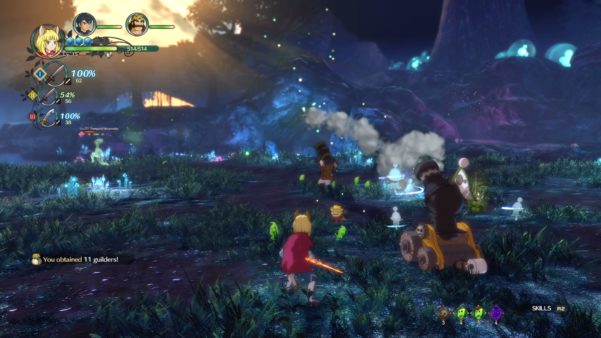
One of my few gripes I had with Ni No Kuni II was with the combat, often battles could be easily won through just spamming the attack button without needing to use any real tactics or the use of abilities or magic. The first game was known for being notoriously hard, and whilst they have addressed this issue it feels that maybe they went a bit too far and overall made Ni No Kuni II feel a little too easy in comparison.
Now I can’t mention combat without mentioning Higgledies, the smart, cute, charming and also lethal companions that will aid you in battle, and don’t let their appearance fool you, these little guys are extremely useful and can really turn the tide of battles and do huge damage. One set of Higgledies can trigger a cannon that will fire a barrage of bombs on enemies and another set will send out an orb which will give you an overshield and max out your health.
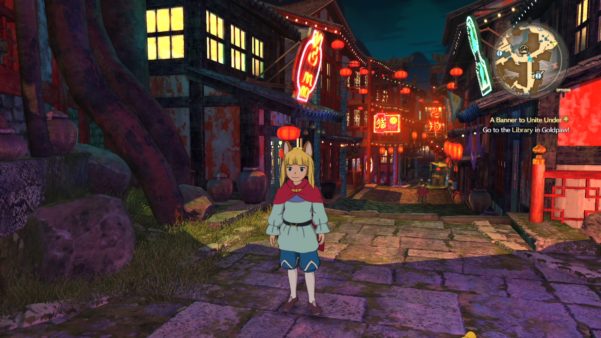
I wrapped up the main story line of Ni No Kuni II: Revenant Kingdom at around 33 hours playtime, and spent a further 8 hours doing side quests, dungeons and doing more of the side activities the game offers. Alot more of the hours to come will be spent upgrading Evans Kingdom of Evermore.
In a sims-like activity the game sees you upgrading a Kingdom, not just a visual affair however the depth involved within this mode is intense and can have serious bonuses that can give you a huge advantage in combat via powerful gear, extra guilders (read money) and huge XP gains in combat. Truth be told for the most part the kingdom building is optional and is only really required in a few points to gate progression in the story, but the mode is so well fleshed out that it adds a lot of content and a genuine reason for doing them.

Similarly as important to the story are skirmishes, a overworld style chibi battle system where you will command an army into battle, the mode is also very fleshed out and has its own set of abilities, skills, unit types with different strengths and weaknesses. All in all the shear amount of content offered within Ni No Kuni II is really astonishing, and in a time where DLC, micro-transactions and Loot Boxes are becoming more and more popular, I must give props to Level 5 Studios for offering up an extremely well polished, complete game packed with a tonne of good well fleshed out content.
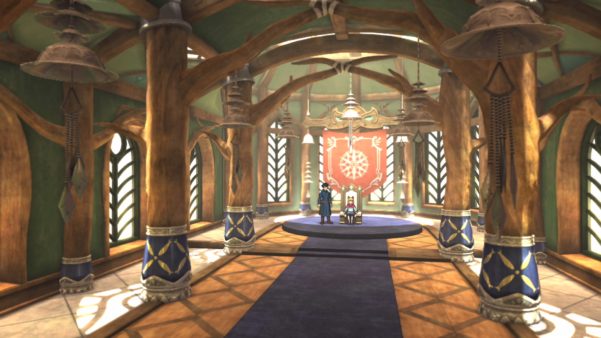
Ni No Kuni II has a charm to it that I haven’t felt in a game in a long time, add that to its deep RPG mechanics, varied and expansive gameplay, fluid battle system and colourful set of characters with top notch voice acting, and you have the recipe for an amazing JRPG. Whilst I was left wanting a little more challenge from combat, I feel like Level 5 Studio have knocked it out the park with Ni No Kuni II, and highly recommend it to any fans of the genre or series.


